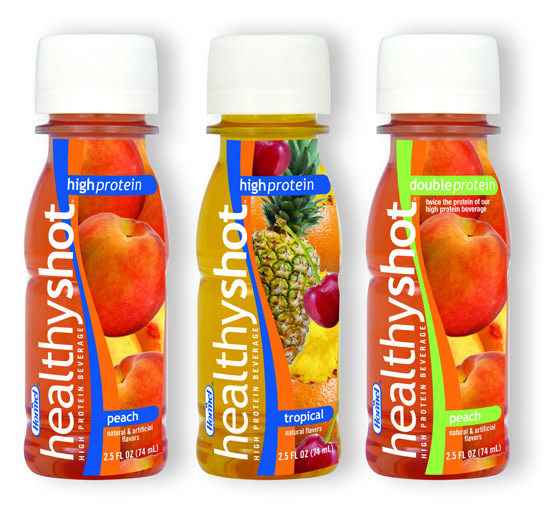 Amcor PET Packaging, a leader in hot fill PET technology, has broken new ground with the introduction of the industry’s smallest hot fill PET container. The unique 2.5oz (74mL) PET bottle, which is produced at Amcor’s state-of-the-art facility in Nicholasville, Ky., is used for the first time by Hormel Health Labs for the launch of its new healthy shot™ high-protein healthcare beverage.
Amcor PET Packaging, a leader in hot fill PET technology, has broken new ground with the introduction of the industry’s smallest hot fill PET container. The unique 2.5oz (74mL) PET bottle, which is produced at Amcor’s state-of-the-art facility in Nicholasville, Ky., is used for the first time by Hormel Health Labs for the launch of its new healthy shot™ high-protein healthcare beverage.Amcor adapted its proprietary hot fill technology, used primarily for large containers, to create a relatively simple cylindrically-shaped bottle to meet the needs of the specialty healthcare beverage market. “Perhaps the most difficult part was getting heat set properties into a bottle that size,” explained Kirk Maki, Amcor Project Engineer. “Vacuum control in hot filling and cooling is the other critical issue, which also required considerable manipulation.”
Controlling the process
From the start, Maki knew the standard process would require a change so many hours of up-front testing and engineering was devoted to the design. “We had to take a step back and determine how we were going to get the process control we needed on a much smaller container. In theory, 2 over 1 equals 10 over 5, but in practice it is very different.
“First, we had to modify our equipment and add specialty machine controls. We had to downsize and modify the tooling to create a scaled down version of how we would normally process the container in order to drive heat set properties to a level high enough to prevent deformation under the heat. We accomplished what we set out to do. The heat set testing has come back at levels equal to or better than some of our other larger heat set containers,” Maki said.

Maki acknowledged there were challenges with the overall bottle design relating to vacuum control. Testing and calculations based on container diameter were run up-front to ensure that specialty paneling wouldn’t be needed. The paneling was fine when initial hot-filling and cooling trials were run, but “the panel rib design had issues. Nothing critical, but we felt it just wasn’t quite right,” Maki said.
So the team modified the rib portion of the design. In the process, they developed a superbly smooth area of labeling. “If you make a container that looks good with a wrap label, it will look great in a shrink label,” Maki said.


